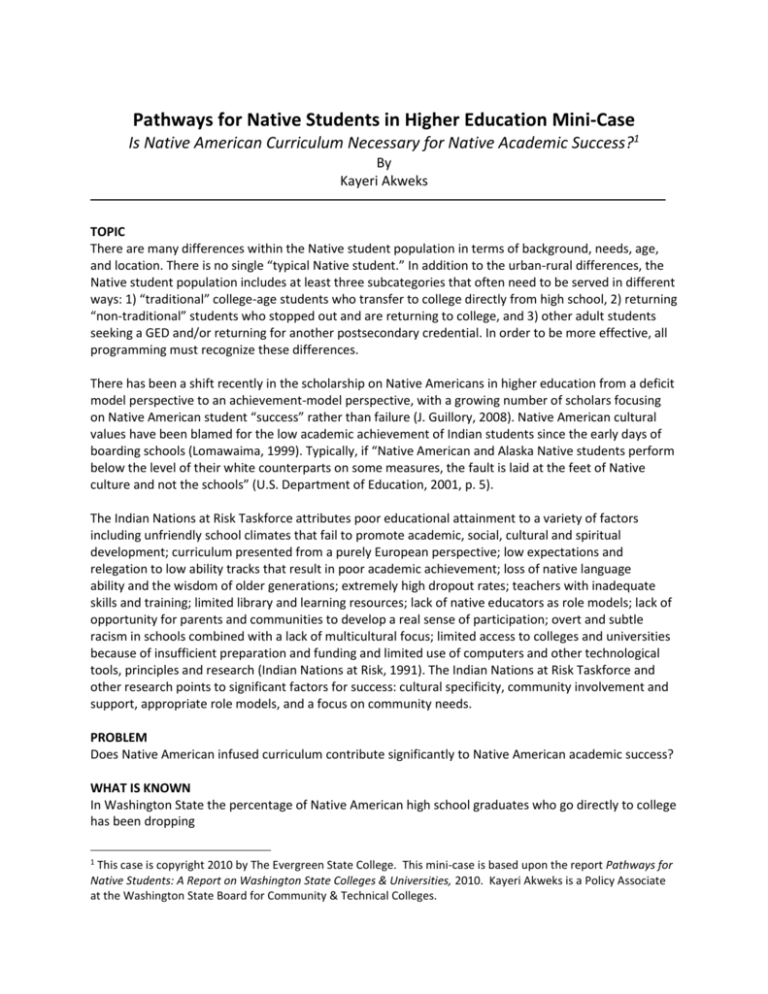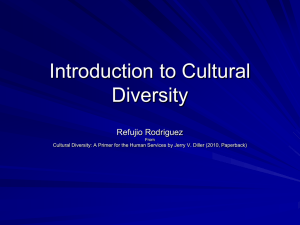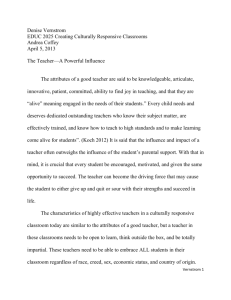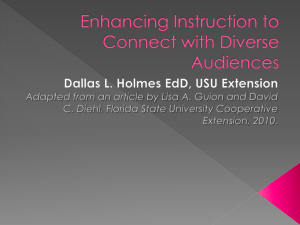Akweks - Enduring Legacies Native Cases
advertisement

Pathways for Native Students in Higher Education Mini-Case Is Native American Curriculum Necessary for Native Academic Success?1 By Kayeri Akweks TOPIC There are many differences within the Native student population in terms of background, needs, age, and location. There is no single “typical Native student.” In addition to the urban-rural differences, the Native student population includes at least three subcategories that often need to be served in different ways: 1) “traditional” college-age students who transfer to college directly from high school, 2) returning “non-traditional” students who stopped out and are returning to college, and 3) other adult students seeking a GED and/or returning for another postsecondary credential. In order to be more effective, all programming must recognize these differences. There has been a shift recently in the scholarship on Native Americans in higher education from a deficit model perspective to an achievement-model perspective, with a growing number of scholars focusing on Native American student “success” rather than failure (J. Guillory, 2008). Native American cultural values have been blamed for the low academic achievement of Indian students since the early days of boarding schools (Lomawaima, 1999). Typically, if “Native American and Alaska Native students perform below the level of their white counterparts on some measures, the fault is laid at the feet of Native culture and not the schools” (U.S. Department of Education, 2001, p. 5). The Indian Nations at Risk Taskforce attributes poor educational attainment to a variety of factors including unfriendly school climates that fail to promote academic, social, cultural and spiritual development; curriculum presented from a purely European perspective; low expectations and relegation to low ability tracks that result in poor academic achievement; loss of native language ability and the wisdom of older generations; extremely high dropout rates; teachers with inadequate skills and training; limited library and learning resources; lack of native educators as role models; lack of opportunity for parents and communities to develop a real sense of participation; overt and subtle racism in schools combined with a lack of multicultural focus; limited access to colleges and universities because of insufficient preparation and funding and limited use of computers and other technological tools, principles and research (Indian Nations at Risk, 1991). The Indian Nations at Risk Taskforce and other research points to significant factors for success: cultural specificity, community involvement and support, appropriate role models, and a focus on community needs. PROBLEM Does Native American infused curriculum contribute significantly to Native American academic success? WHAT IS KNOWN In Washington State the percentage of Native American high school graduates who go directly to college has been dropping 1 This case is copyright 2010 by The Evergreen State College. This mini-case is based upon the report Pathways for Native Students: A Report on Washington State Colleges & Universities, 2010. Kayeri Akweks is a Policy Associate at the Washington State Board for Community & Technical Colleges. from 52% in 1998 to 37.8% in 2003. (HecBd, 2006, 43). High enrollment rates and low success rates in basic studies offered in the first two years of college point to areas badly needing reform across curriculum, teaching and student services. Many current efforts reflect what the literature suggests as best practices for Native student success as using culturally relevant curriculum and teaching. Various efforts in Washington, including the Enduring Legacies Native Cases Project, are purposefully creating culturally relevant curriculum. In addition to developing interventions around key transition points for students, many institutions are also working to create more culturally relevant curriculum and to restructure “gatekeeper courses” that have high rates of withdrawal and failure. Higher education institutions will need to work seriously with tribal communities and develop approaches that foster Native student success. This calls for broader notions of student success and a curriculum more grounded in real community issues and needs, which includes a sense of how tribal communities and governments fit in the emerging global environments as nations. DISCUSSION QUESTIONS 1. What are some of the efforts in Washington state in the Pathways report that reflect culturally relevant curriculum? Which of these might work at your institution? 2. Look at the recently developed Native Cases curriculum at http://nativecases.evergreeen.edu and find five cases that you think would be relevant to your college’s curriculum. 3. Are Native students at-risk because most higher education curriculums are European culturally based? Why? 4. Are Native students more academically successful and engaged if they are exposed to Native culturally infused curriculums? 5. Why is culturally relevant curriculum important for Native student success? 6. What are some ways of making science curriculum culturally relevant to Native students? 7. Do tribal members lose their culture when they go to college? Do tribes lose more of their cultural base when their students go to college? 8. Can students maintain their tribal identities and culture if higher education courses are not culturally relevant? How? 9. Do Native students have a right to Native culturally infused education curriculums?





